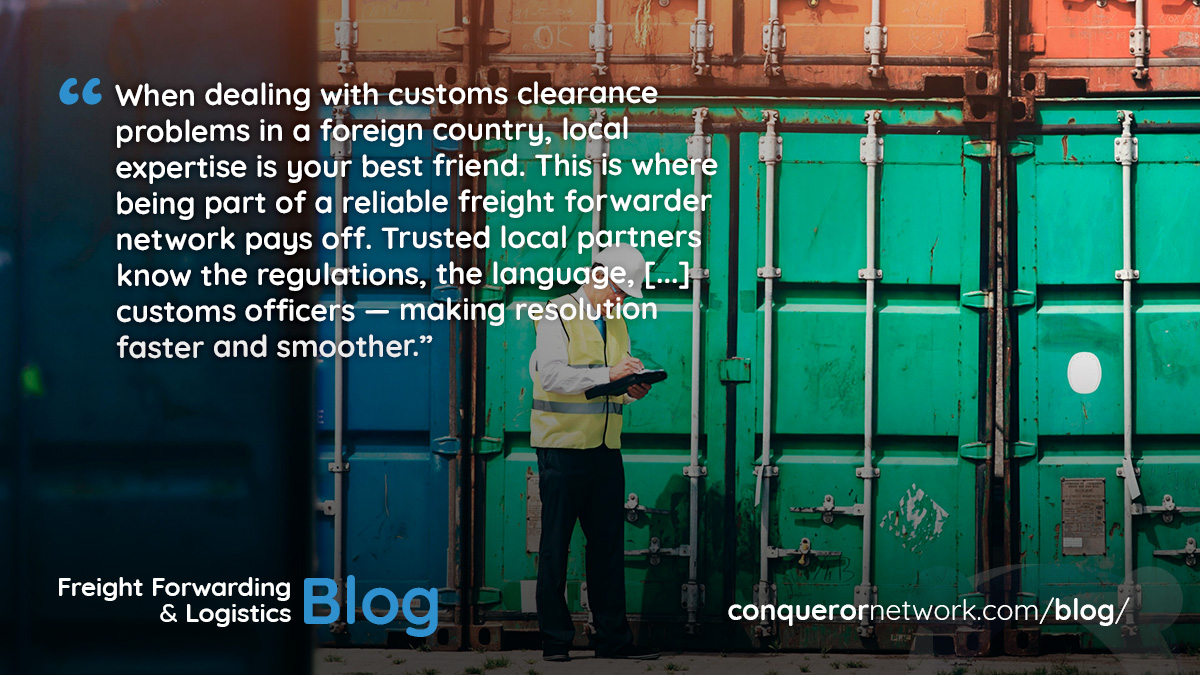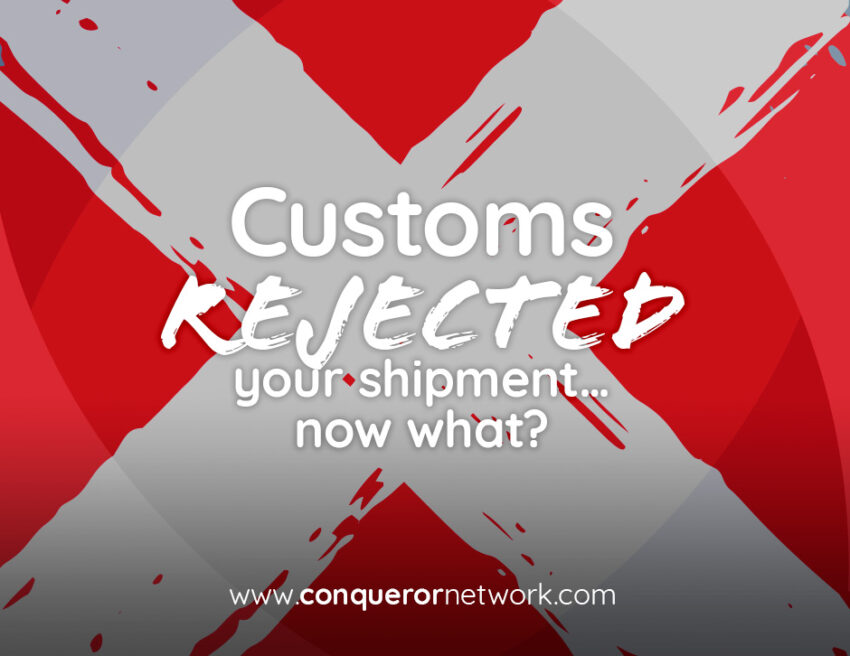If you’ve worked in freight forwarding long enough, you’ve probably had that sinking feeling: the call or email saying your client’s shipment is stuck at customs. The cargo’s not moving, the clock is ticking, and storage charges are climbing by the hour.
Customs clearance problems aren’t just an occasional headache. In some cases, they can derail delivery schedules, damage client trust, and disrupt an entire supply chain. The good news? With a sharp eye, the right preparation, and quick action, you can resolve most issues without lasting damage.
Let’s talk about how to recognize trouble before it snowballs and what to do when customs brings your cargo to a standstill.

The most common customs clearance problems
Freight forwarders deal with dozens of clearance cases every month, and yet the reasons for delays or rejections tend to fall into familiar categories. Understanding them makes it easier to prevent repeat issues.
-
Incomplete or inaccurate paperwork – The number one culprit. Incorrect HS codes, missing signatures, or a mismatched packing list can all trigger a hold.
-
Regulatory non-compliance – Certain goods require permits, licenses, or inspection certificates. Missing one can mean instant rejection.
-
Misdeclared goods – Declaring a lower value or the wrong origin country might seem harmless until customs flags it as fraud.
-
Restricted or prohibited goods – Just because an item is legal in one country doesn’t mean it’s permitted in another.
When you know the “usual suspects,” you can take preventive steps before the cargo even leaves the origin port.
How to respond when customs flags your shipment
The moment you hear there’s an issue, get all the facts. Ask the customs broker or agent handling the clearance to give you the exact reason and the specific documents or actions needed.
A vague “problem at customs” isn’t enough. You need to know:
-
Which document or requirement is missing or incorrect.
-
Whether this is a simple administrative fix or a regulatory compliance issue.
-
How urgent the timeline is before storage fees, demurrage, or penalties kick in.
Once you have the details, you can move into resolution mode.
Paperwork errors: The fastest fix
The easiest customs clearance problems to resolve are paperwork-related. If a document is missing or wrong, your job is to get the correct version to customs as quickly as possible.
This means:
-
Double-checking invoices for accurate product descriptions, values, and HS codes.
-
Ensuring packing lists match what’s physically in the shipment.
-
Providing any required certificates or permits immediately.
In many cases, the problem is a minor oversight that can be resolved in hours, as long as you respond fast.
When the issue runs deeper
Not all customs clearance problems are quick fixes. If the goods don’t comply with local regulations, for example, if they fail safety standards or require special permits, the process can take longer.
In these cases, you may need to:
-
Arrange for testing or inspection.
-
Apply for an import license or permit.
-
Modify or relabel goods to meet requirements.
If the item is outright prohibited, your options are limited to re-exporting the cargo or arranging for disposal in compliance with local laws.
Communicating with clients during delays
Clients can handle delays better when they understand what’s happening and see you taking control. The moment a problem arises, tell them:
-
What the issue is.
-
What steps are you taking to resolve it?
-
The expected timeline for clearance.
Silence or vague answers can do more damage to your business than the delay itself. Transparency and fast action are the best ways to maintain trust.
Preventing customs clearance problems before they happen
Prevention is always better than damage control. Here’s how to reduce your risk:
-
Research destination regulations in advance – Don’t assume your client knows all import rules.
-
Work with experienced customs brokers – They can spot red flags in documentation before submission.
-
Use pre-clearance services – Submitting documents for review before the shipment arrives can save days.
-
Train your team – Ensure everyone handling documentation understands compliance basics.
-
Maintain accurate product databases – Correct HS codes, descriptions, and values should be standard for every shipment.
What to do when your cargo is on customs hold
A customs hold doesn’t necessarily mean rejection but it can escalate if you ignore it. The moment you get a hold notice:
-
Respond to any customs queries immediately.
-
Keep a record of all communications and submissions.
-
Follow up until you receive written confirmation that the hold is lifted.
Even something as small as a missing translation on an invoice can keep your cargo stuck for days if you don’t act quickly.
The role of a strong freight forwarders network
When dealing with customs clearance problems in a foreign country, local expertise is your best friend. This is where being part of a reliable freight forwarder network pays off. Trusted local partners know the regulations, the language, and often have direct relationships with customs officers, making resolution faster and smoother.
Final word
Customs clearance problems are an inevitable part of international shipping, but they don’t have to become disasters. The key is preparation, fast action, and clear communication both with customs officials and with your clients. By understanding the common causes, having a plan for quick resolution, and building strong partnerships with experienced brokers and agents, you can turn a potential crisis into just another day at the office. When the next shipment hits a snag at customs, you’ll know exactly what to do and your clients will remember that you handled it like a pro.


